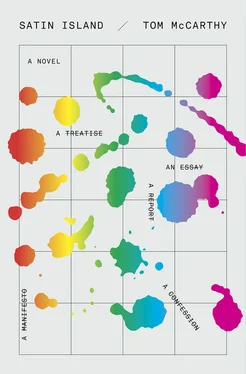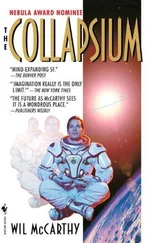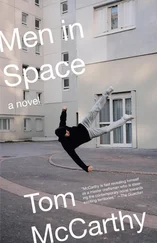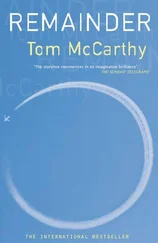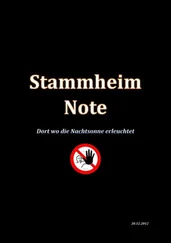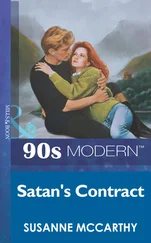5.6Another concept that he put about a lot, that was much quoted: narrative. If I had, he’d say, to sum up, in a word, what we (the Company, that is) essentially do, I’d choose not consultancy or design or urban planning , but fiction . Fiction? asks the interviewer (this one comes from Consulting Today —but he says the same thing in his Urban Futures profile; and in the RIBA transcripts). Fiction, Peyman repeats. The city and the state are fictional conditions; a business is a fictional entity. Even if it’s real, it’s still a construct. Lots of the Company’s projects have been fictions that became real. For example? asks the interviewer. For example, Peyman answers, the EU commissioned us to imagine what a concrete affirmation of a European commonality might look like — purely speculatively, you understand. So we designed a flag. It didn’t really look much like a flag — more like a rainbow bar-code formed of strips of all the colours of the member-nations’ flags. Once we’d come up with it, we Photoshopped it into a bunch of pictures: of the EC President giving a speech; finance ministers from member-states sitting round a table; even entrances to governmental buildings in a range of European capitals. We’d find a suggestive photo, then adapt it. The images caused a furore. No one stopped to ask if they were real. The conservative press denounced these bar-code ensigns, called them illegitimate; progressives, though, adopted them, so real ones started springing up. Thus the facts, in this case, followed from the fiction. Fiction was what engendered them and held them in formation. We should view all propositions and all projects this way.
5.7His most famous riff, perhaps, was about knowledge. Not knowledge of anything in particular; just knowledge in and of itself. Who was the last person, he would ask, to enjoy a full command of the intellectual activity of their day? The last individual , I mean? It was, he’d answer, Leibniz. He was on top of it all: physics and chemistry, geology, philosophy, maths, engineering, medicine, theology, aesthetics. Politics too. I mean, the guy was on it. Like some universal joint in the giant Rubik’s Cube of culture, he could bring it all together, make the arts and sciences dance to the same tune. He died three hundred years ago. Since Leibniz’s time (Peyman would go on), the disciplines have separated out again. They’re now on totally different pages: each in its own stall, shut off from all the others. Our own era, perhaps more than any other, seems to call out for a single intellect, a universal joint to bring them all together once again — seems to demand, in other words, a Leibniz. Yet there will be no Leibniz 2.0. What there will be is an endless set of migrations: knowledge-parcels travelling from one field to another, and mutating in the process. No one individual will conduct this operation; it will be performed collectively, with input from practitioners of a range of crafts, possessors of a range of expertise. Migration, mutation, and what I (Peyman affirmed) call “supercession”: the ability of each and every practice to surpass itself, break its own boundaries, even to the point of sacrificing its own terms and tenets in the breaching; and, in the no-man’s-land between its territory and the next, the blank stretches of the map, those interstitial zones where light, bending and kinking round impossible topographies, produces mirages, fata morganas , apparitions, spectres, to combine in new, fantastic and explosive ways. That, he’d say, is the future of knowledge.
5.8When I went up to meet him on the fifth floor — whenever I went there, I mean — the thing that would impress itself upon me most, the thing I’d most remember afterwards, wasn’t the meeting itself, but rather its peripherals: the angle of approach towards his office; the tap my heels made on the wooden boards; the reflections in the glass partition separating his room from the rest of the floor — reflections of reflections, since the whole floor had (as I mentioned earlier) these glass screens that ghost-doubled one another. The few feet just before this last partition lay within a blind spot whose occupant, or traverser, would be hidden from the rest of the floor’s view — invisible, in other words, to the many people who worked in all the other glass-partitioned spaces. Each time I entered and moved through this stretch, I’d hold my right hand up beside my head and click its fingers — three times, click-click-click . I don’t know why I did it; it was a kind of tic, made all the more enjoyable by the knowledge that only I would ever experience or even know about it; in the midst of all the overload and noise, a small, private act, and a small, private enclave for the act’s appreciation. I did it every time I came to visit Peyman — and, each time I did, the couple of seconds it took me to do it merged with the couple of seconds it had taken me to do it last time, and the time before, and every time since I’d first done it, not to mention all the times that I would do it in the future; so I found myself transported, for those — for all those — seconds, into a kind of timelessness in which only this act and its unfolding, this now-eternal click-click-clicking of my right hand’s fingers, did or could exist.
5.9That Friday, when I went up to see him, he greeted me, without removing his gaze from the hand-held into which he was typing a message, with a question. As I stepped out of the blind spot back into time and his office, he asked: Have you ever been to Seattle, U.? Behind him, through the floor-to-ceiling windows, cranes, clouds, bridges, aeroplanes, the Thames all jostled for position. No, I answered. It’s interesting, he said. Oh yes? I asked. How so? Well, he replied, the truly striking thing about the city is its lack of Starbucks outlets: driving around, you don’t see a single one. That’s strange, I said; I thought Seattle was where Starbucks came from. Exactly , he said; you’d think the town would turn out to just be one giant Starbucks. But instead it’s all Joe’s Cappuccino Bar, Espresso Luigi, Pacific Coffee Shack and the like. So what’s the story there? I asked. What’s the story indeed? he repeated. This is exactly what I asked my driver; and do you know what he told me? Peyman looked up from his device. I shook my head. He told me, Peyman said, his gaze now drifting over to his monitor, that these were Starbucks: stealth ones. Starbucks’ management, their strategists, understand that no one actually wants to buy coffee from Starbucks; they do it for convenience, heads hung low with shame. People crave authenticity, locality and (here his speech slowed down a little, since he’d started typing again)… origin — everything that Starbucks, as a global chain, represents the polar opposite of. So the strategists (he went on) create these “local” figures — Joe, Luigi and the like — and launch a handful of outlets for each, not too near to one another, and see how they fare: real-world R&D. If one takes off, they’ll roll it out nationwide, and across Europe, Asia and the rest — and everyone will flock to it, because it isn’t Starbucks. Isn’t that brilliant? he asked. Yes, I replied; I guess it is.
5.10He proceeded to brief me on the Project; the Company’s role in this; my own within that. There’d be a meeting with the Minister in a few weeks’ time; he wanted me to come; he wanted me to go to Paris; he wanted me to continue following my own lines (or sidelines) of intuitive enquiry, and report back intermittently on these, as always; there was other stuff. I’m being quite vague, in part because I’m obliged to be; but in part because he was quite vague as well. He’d always been that way: his currency also comprised, as its reserve, a kind of systematic vagueness. Some spaces of ignorance do not need to be filled in —that was another of his aphorisms. His whole knack, the USP on which he’d built his business, was for managing uncertainties, for somehow joining isolated dots into a constellation-pattern people could just— just —recognize, and be seduced by. As I listened to him talk about Koob-Sassen, it all made sense, even if it didn’t. Even the fact that it didn’t quite make sense made sense, while he was talking.
Читать дальше
